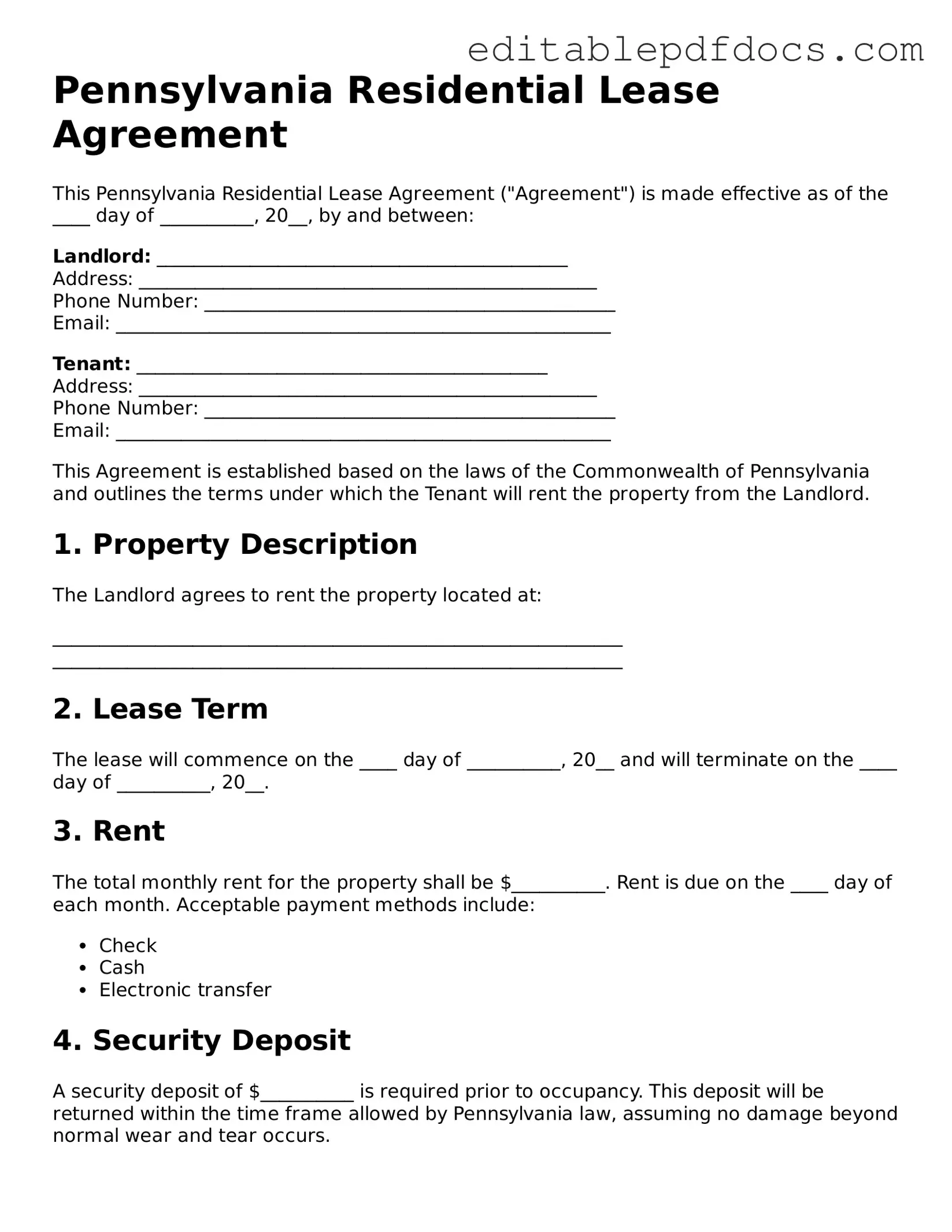Residential Lease Agreement Document for Pennsylvania
The Pennsylvania Residential Lease Agreement form is a legal document that outlines the terms and conditions between a landlord and tenant for renting a residential property in Pennsylvania. This agreement serves to protect the rights of both parties while ensuring a clear understanding of responsibilities, rent payment schedules, and property maintenance. To get started on your lease agreement, fill out the form by clicking the button below.
Open Editor Now
